M92 Globular Cluster
Click image for full size version
Sept 14, 2010 – Published in SkyNews Magazine, Nov/Dec 2010
Even in a very dark sky, most stars seem pretty bland to the naked eye as far as colour is concerned. There are some exceptions, like orange-red Betelgeuse, reddish Antares, and yellow Arcturus, but most look white. But all stars have colour, and colour is related to temperature. The coolest stars are red, with hotter stars being orange, yellow and white. Blue stars are the hottest of all. This shot shows my favourite globular cluster (they’re all my favourite, really), M92, and I really tried to bring out the star colour in this image. M92 contains hundreds of thousands of stars, and is one of more than 150 such objects associated with our own galaxy, the Milky Way.
This gem is a beauty visually through a telescope, but it often gets ignored because it lies so near the bigger and brighter M13. The Great Hercules cluster may be impressive (it really is), but I’ll take M92 any day. Several astrobuds and I had a good look at M92 last Friday night through my 20″ reflector. Even through the big scope I see virtually no colour in this object. But WOW is it ever pretty. It looks like someone spilled diamond dust on a black table cloth.
From an image processing point of view, this image represents another first for me: High Dynamic Range (HDR) imaging. Basically, for objects like this that have a very wide brightness range, imaging can be tricky. If you try to get the faint stars, the core gets burned out; to get the core, you lose the faint stars. So I shot a series of 10 minute, 5 minute and 2 minute frames and combined them using a HDR method. This protected the core from being blown out, and retained the faint stars around the edges of the cluster. For those of you who attended my talk on imaging last weekend, The HDR Combine tool for PixInsight was just released today, along with four other bug fix and improvement modules yesterday.
Tekkies:
9x10m, 7x5m and 11x2m light frames with fair transparency, poor seeing and a crescent moon. Acquired using Nebulosity 2 software, QHY8 camera (Gain=0; Offset=125) with UV/IR filter, LPS filter, and a 152 mm refractor at f/8 on an MI-250 mount. The mount was autoguided using PHD software, and the KWiqGuide system from KW Telescope. Light frames were calibrated with 9 darks (bad pixel mapping only), 25 flats and 50 bias frames. The calibration was done in Images Plus 3.0. Alignment, stacking and processing exclusively using PixInsight. This was my first use of the HDR Combine Tool. After calibrating and aligning all the light frames, I made master 2m, 5m and 10m frames. I did background extraction and colour calibration on three images, and then used the HDRCombine Tool in PixInsight to make a HDR frame. This frame was then processed using my normal work flow in PixInsight. Final image was saved as a jpg at full scale, about 1.25 arcsec/pixel. Shot from my SkyShed just north of Guelph, ON.
NOTE – Published in SkyNews Magazine (Nov/Dec 2010)

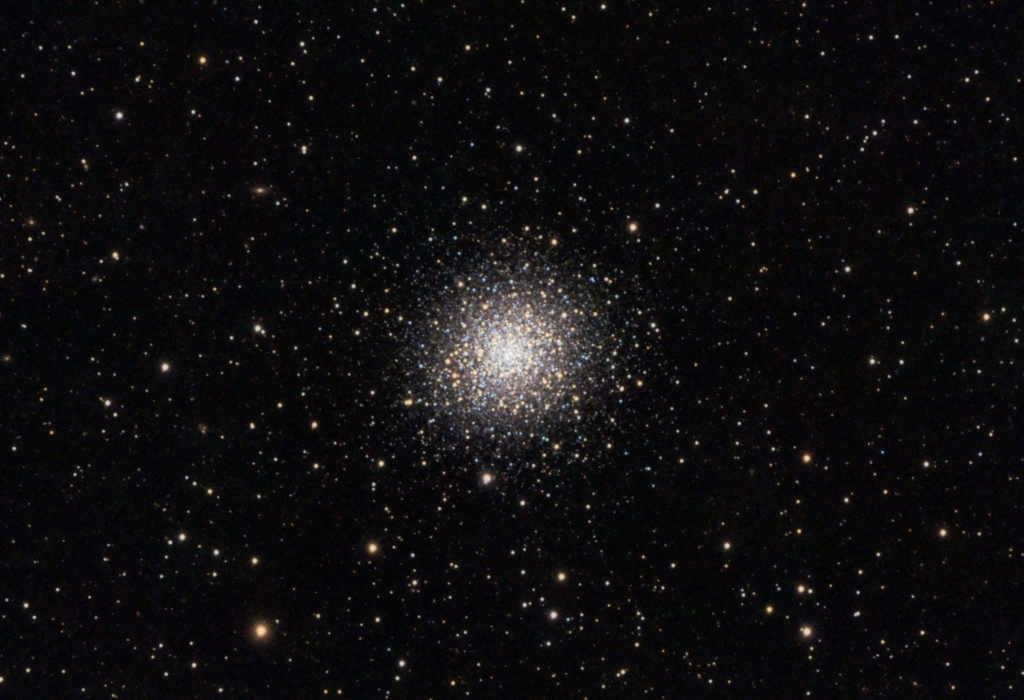
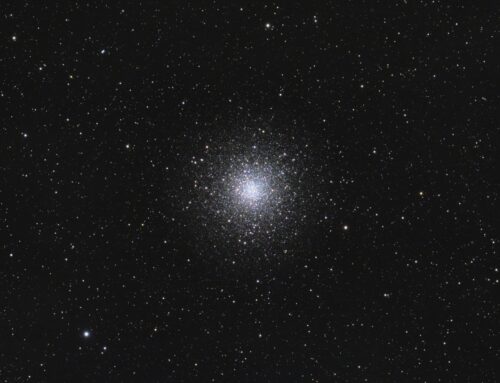
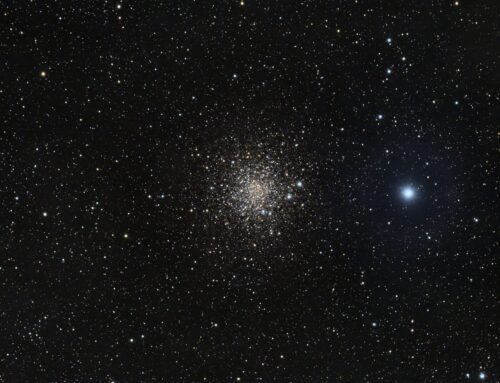

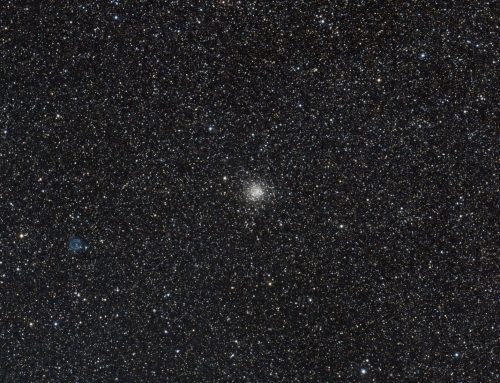
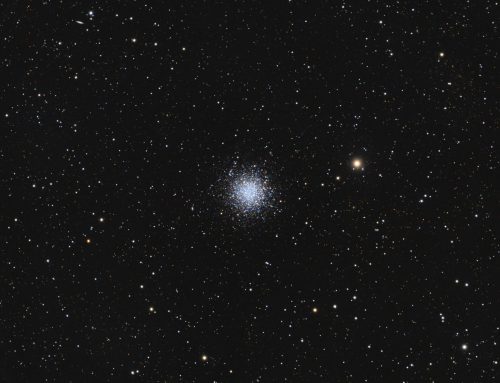
Leave A Comment